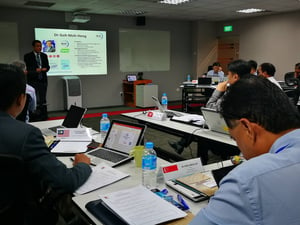 When a person is introduced to business continuity management (BCM) concepts: It comprises of the business continuity (BC), crisis management (CM), crisis communication (CC) and IT Disaster Recovery (DR), there is a tendency to read and understand the concepts from the English definition.
When a person is introduced to business continuity management (BCM) concepts: It comprises of the business continuity (BC), crisis management (CM), crisis communication (CC) and IT Disaster Recovery (DR), there is a tendency to read and understand the concepts from the English definition.
It is useful but the need to be precise in the BC, CM, CC and IT DR field of definition is essential for the right strategy and content of the plans to be developed.
Basic BCM Concepts
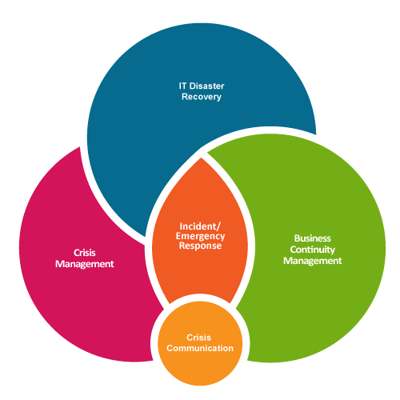 Businesses are subject to disruptions of varying severity. An incident or emergency, if not managed properly, can develop into a disaster or crisis. Besides affecting normal business operations, such an unplanned disruption can tarnish an organization’s image.
Businesses are subject to disruptions of varying severity. An incident or emergency, if not managed properly, can develop into a disaster or crisis. Besides affecting normal business operations, such an unplanned disruption can tarnish an organization’s image.
In the extreme case, an incident that is not properly managed can result in significant physical or environmental damage, cause significant injuries to employees or even death.
Here is my layman example of the definition of an incident, emergency, disaster and crisis when explaining each of the BCM concepts.
To further illustrate the definition, I am explaining the definition by using a robbery occurring in a bank as an example to further illustrate these few concepts.
Cautionary Note: This is a laymen version of the definition and you will need to refer to the definition on BCMPedia if you are tempting any BCM Institutes certification examination.
Incident
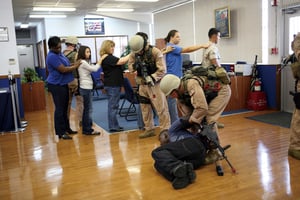 An incident is something non-ordinary that had just occurred to your business environment. For example, there is a robbery in progress in the bank. It is considered to be an incident.
An incident is something non-ordinary that had just occurred to your business environment. For example, there is a robbery in progress in the bank. It is considered to be an incident.
For simplicity, it is a security incident and the person responsible will the the designated "Head of Security" and also the security personnel stationed at the banking hall.
If the robbery incident is "completed" which means the robber has left the premise or been arrested, the security incident becomes a "non-incident" and after the police had completed their investigation, the environment will be asked to stand-down.
Emergency
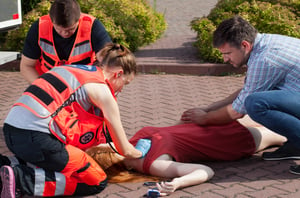
What could happen is that the robber had in its procession a weapon and he or she had cause harm or even death to one of the staff members of the bank or even to a customer.
This action is quickly escalated as a emergency as there is immediate medical (life-safety) attention needed to the affected staff member or customer.
Disaster
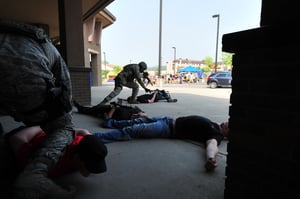
The consequence of a death or even injury will result in the bank being closed for investigation and even for forensic investigation.
This will result in the closure of the bank premises and hence, there is a denial of access to the premises. The definition falls under a "disaster."
Crisis
 Should death occurs, the next of kin to the customer or the staff member could take the bank to task and the law suit will become a crisis to the organisation.
Should death occurs, the next of kin to the customer or the staff member could take the bank to task and the law suit will become a crisis to the organisation.
Remember, the bank premises is now open to the public except there are having a crisis of being being sued. The bank is having a "serious problem" or "crisis" but its premises are open to business.
Reflection

As this is just my simple illustration to explain the four concepts, it is important to refer to the actual definition as highlighted in BCMPedia.
More Information About Blended Learning
![[BL-5-Catalog] What Expert Level Blended Learning Courses that are Available?](https://no-cache.hubspot.com/cta/default/3893111/fe175db3-7f57-4636-bf09-e9a836aa5478.png) |
![[BL-3-Catalog] What Specialist Level Blended Learning Courses that are Available?](https://no-cache.hubspot.com/cta/default/3893111/4b22a53c-6e3e-4b9e-8c2a-888423f1d26c.png) |
To know more about our blended learning program and when the next course is scheduled, feel free to contact our friendly course consultant colleagues via sales.ap@bcm-institute.org.
We look forward to having you with us then.



